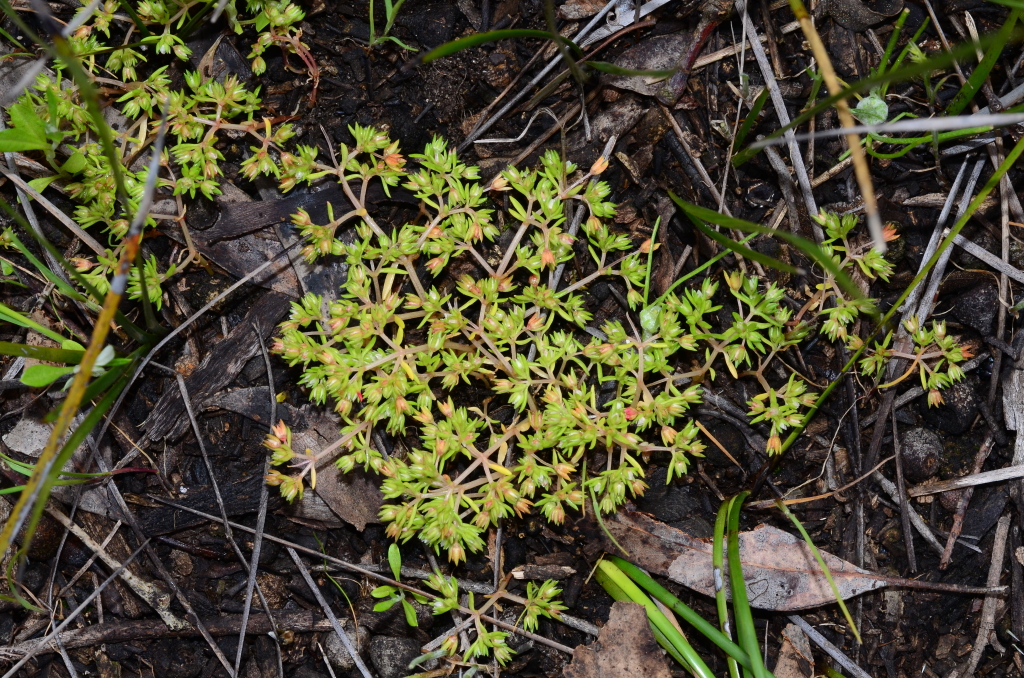Crassula decumbens
Thunb. Spreading CrassulaAnnuals with decumbent or erect branches to 15 cm long, little- to much-branched, sometimes rooting at nodes, sparsely papillose when young. Leaves linear-lanceolate, to -oblanceolate, 2.5–9 mm long, 0.4–1.5 mm wide, acute, rarely obtuse or rounded, dorsiventrally compressed, more or less convex above and usually strongly convex below. Inflorescence 1–several elongate thyrses from the 3 lowest nodes. Flowers 4- or 5-merous; calyx-lobes triangular to oblong-lanceolate, 1.2–4 mm long, acute, rarely with few terminal papillae; corolla white to cream, lobes lanceolate, 1.4–2 mm long, acute, spreading; nectary scales broadly wedge- to T-shaped, 0.2–0.4 mm long, 0.4–0.7 mm wide, usually truncate; carpels elongate-reniform, with 4–12 ovules. Follicles smooth, slightly recurved, splitting and opening into a pore on upper third of suture; fruiting pedicel rarely to 12 mm long; seeds 0.44–0.52 mm long, with tubercles arranged along longitudinal ridges. Flowers Aug.–Nov.
LoM, MuM, Wim, GleP, Brid, VVP, VRiv, RobP, MuF, GipP, OtP, WaP, Gold, CVU, GGr, DunT, NIS, EGL, EGU, WPro, HSF, HNF, OtR, Strz, VAlp. A common and widespread species growing in a wide range of habitats, but usually on seasonally moist soil.
Toelken, H.R.; Jeanes, J.A.; Stajsic, V. (1996). Crassulaceae. In: Walsh, N.G.; Entwisle, T.J., Flora of Victoria Vol. 3, Dicotyledons Winteraceae to Myrtaceae, pp. 542–555. Inkata Press, Melbourne.
 Spinning
Spinning



